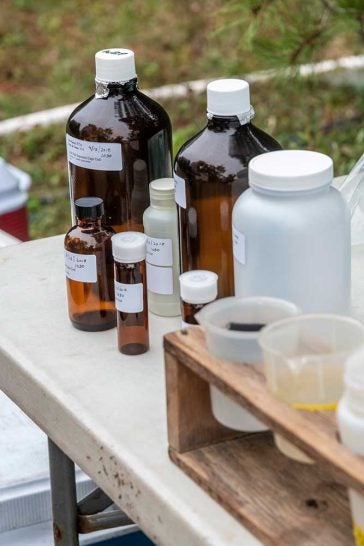 PFAS are a diverse class of fluorinated anthropogenic chemicals that include perfluoroalkyl acids (PFAA), which are widely used in modern commerce. Many products and environmental samples contain abundant precursors that can degrade into terminal PFAA associated with adverse health effects. Fish consumption is an important dietary exposure source for PFAS that bioaccumulate in food webs. However, little is known about bioaccumulation of PFAA precursors.
PFAS are a diverse class of fluorinated anthropogenic chemicals that include perfluoroalkyl acids (PFAA), which are widely used in modern commerce. Many products and environmental samples contain abundant precursors that can degrade into terminal PFAA associated with adverse health effects. Fish consumption is an important dietary exposure source for PFAS that bioaccumulate in food webs. However, little is known about bioaccumulation of PFAA precursors.
A new publication (Pickard, et al) has identified and quantified PFAS in recreational fish species collected from surface waters across New Hampshire, US, using a toolbox of analytical methods. Research suggests that many precursors below detection in water have a higher bioaccumulation potential than their resulting PFAA.
Results of this study reinforce the high bioaccumulation propensity of several long-chain PFAA that are frequently detected in human serum and breastmilk. Exposure to long-chain PFAA has been associated with adverse toxicological outcomes and is correlated with reported fish consumption. Results of this study indicate that additional exposure and risk evaluations are needed for some understudied PFAS, as federal and state regulatory efforts are presently focused on legacy PFAS predominantly detected in water and do not consider the full range of highly bioaccumulative terminal PFAA and precursors discussed in this work. Commercially available standards for potentially bioaccumulative PFAS precursors are essential for more comprehensively characterizing PFAS exposures for all fish consumers.
Read the full article: “PFAS and Precursor Bioaccumulation in Freshwater Recreational Fish: Implications for Fish Advisories,” Pickard, H., et al.


